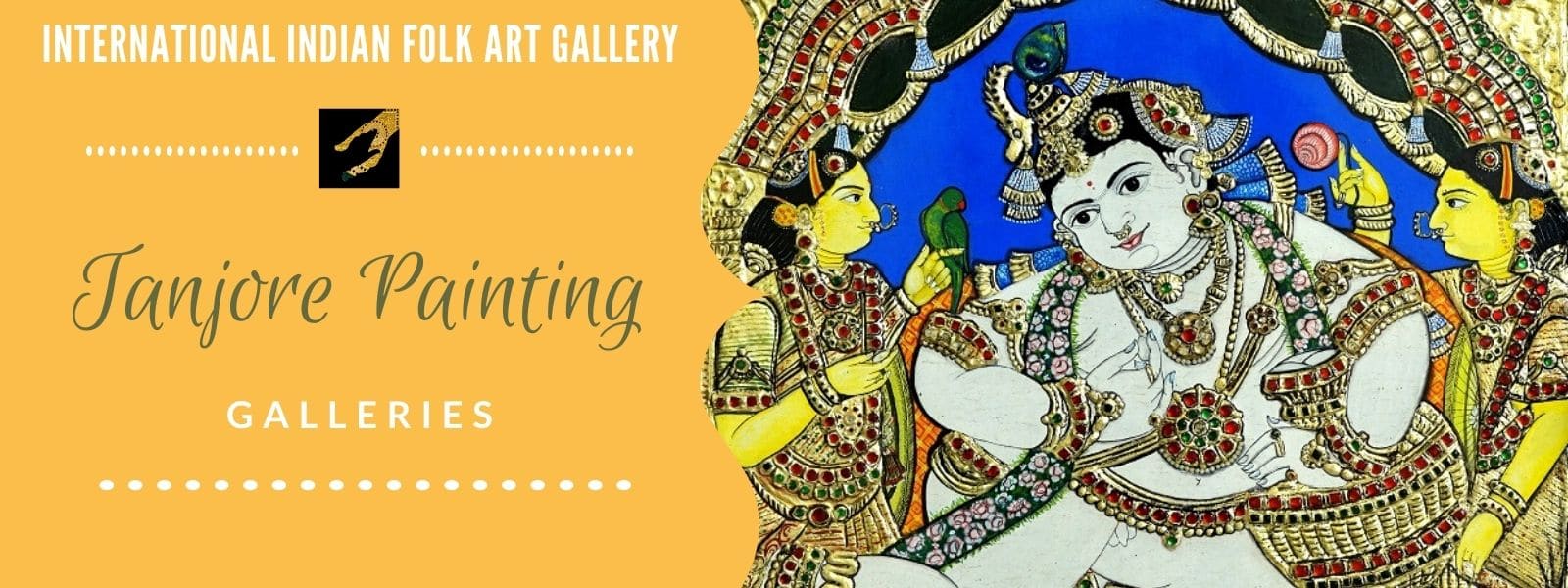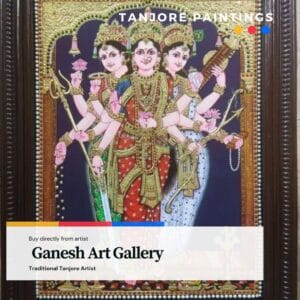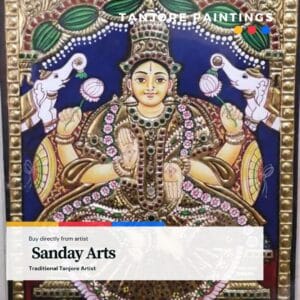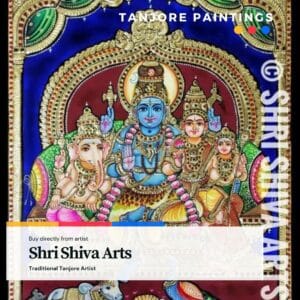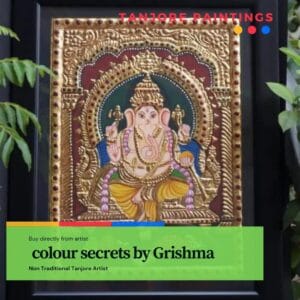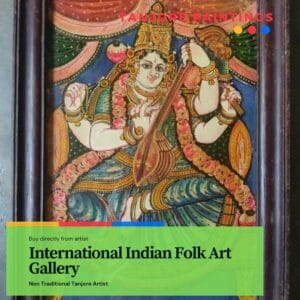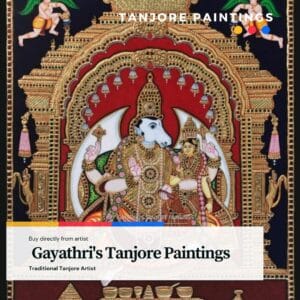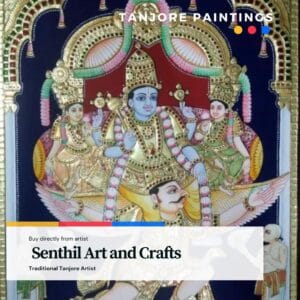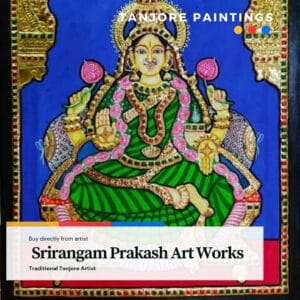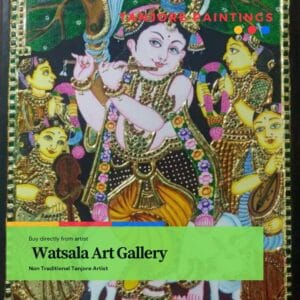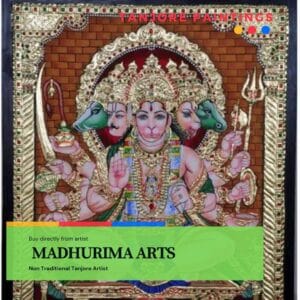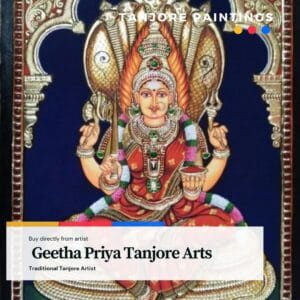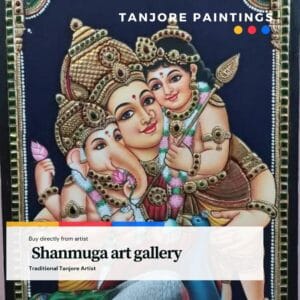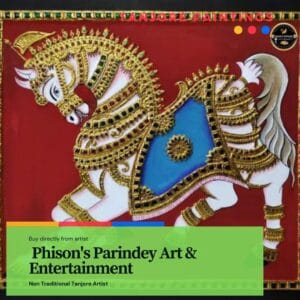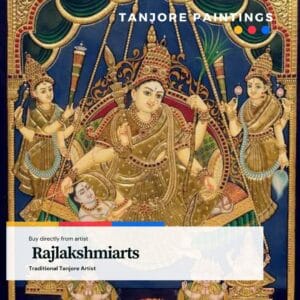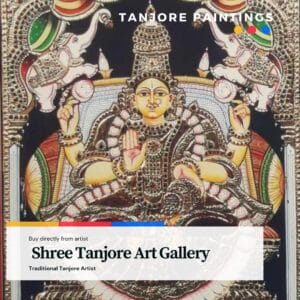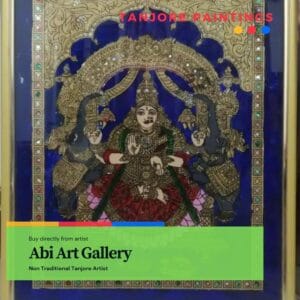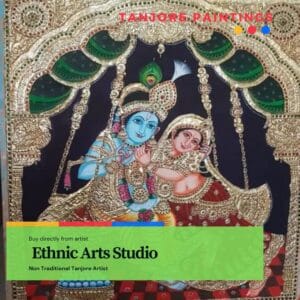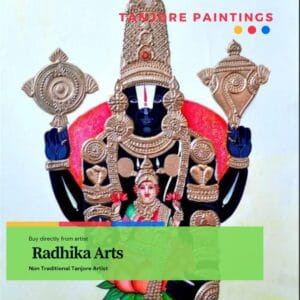Tanjore Painting
Thanjavur Painting is an ancient traditional Indian folk art form and their common theme is mythology. They demonstrate that spirituality is a necessary component of a creative work.
Tanjore Painting is a classical South Indian art developed in the late 16th century in Thanjavur, also known as Tanjore in Tamil Nadu, a south Indian state.
The art of Tanjore originated in the city of Thanjavur, which was originally the capital city of the Chola Empire. It has taken on its own look, enriched with intricate architectural designs and bright colors after being influenced by the murals from imperial era.
The unique style of Thanjavur or Tanjore painting as known today, is known to have flourished in the Maratha court of Thanjavur between the 17th and 19th centuries.
The Maratha people of India, who had been practicing painting for centuries, found new ways to depict the human body and naturalistic landscapes under the guidance of King Serfoji II. King played a particularly significant role in developing this artform.
These Tanjore Paintings offer a taste of the serenity and permanence associated with Puranic scenes. With their lifelike illustrations, this collection is characterised by its alluring design.
The Mughal era saw many changes in the style of artwork. The Marathas ruled over Thanjavur for nearly two centuries, and brought a distinctive style change to Thanjavur paintings.
Maratha artists chose to combine the existing mural-based design with amazing details that showcased exquisite craftsmanship.
The paintings consist a well-rounded figure, a deity with almond shaped eyes. The figure would be housed in an enclosure created by means of an arch, curtains etc.
In this Indian folk art, gold leaves & sparkling stones are used as highlights for accents of the painting like ornaments, dresses etc.
Some of the popular themes include Krishna, Balaji, Lakshmi, Ganesha Tanjore Paintings
It’s been said that Thanjavur paintings are brightly colored and beautiful. In a dark room, the paintings have a potent glow that’s reminiscent of a presence. Most Thanjavur paintings are made on wooden canvasses while some use glass and walls as well.
The styles developed were slight variants of each other. The emphasis at Tanjore was on studded gems and gold leaves. Vuyaioor Importance was on the decorative garland.
Mysore-based paintings that have intricate work. The direct impact on Tanjore art began with the stationing of the British Garrison in Thanjavur in 1778.
Tanjore paintings are known for being made with rich, flat colors that have a glossy look. The they also use something called “gold foil” which is a layer of very small flakes of gold 22k metal leaf, bronze or brass pieces applied to the surface of a painting by hand.
Stones like semi-precious stones help highlight many aspects by injecting light into the painting. The painting is made of 22-carat gold and real Tanjore stones, which produce a special glow and the shine that lasts forever. We can also see migration to contemporary methods of Tanjore paintings by many freelance artists.

